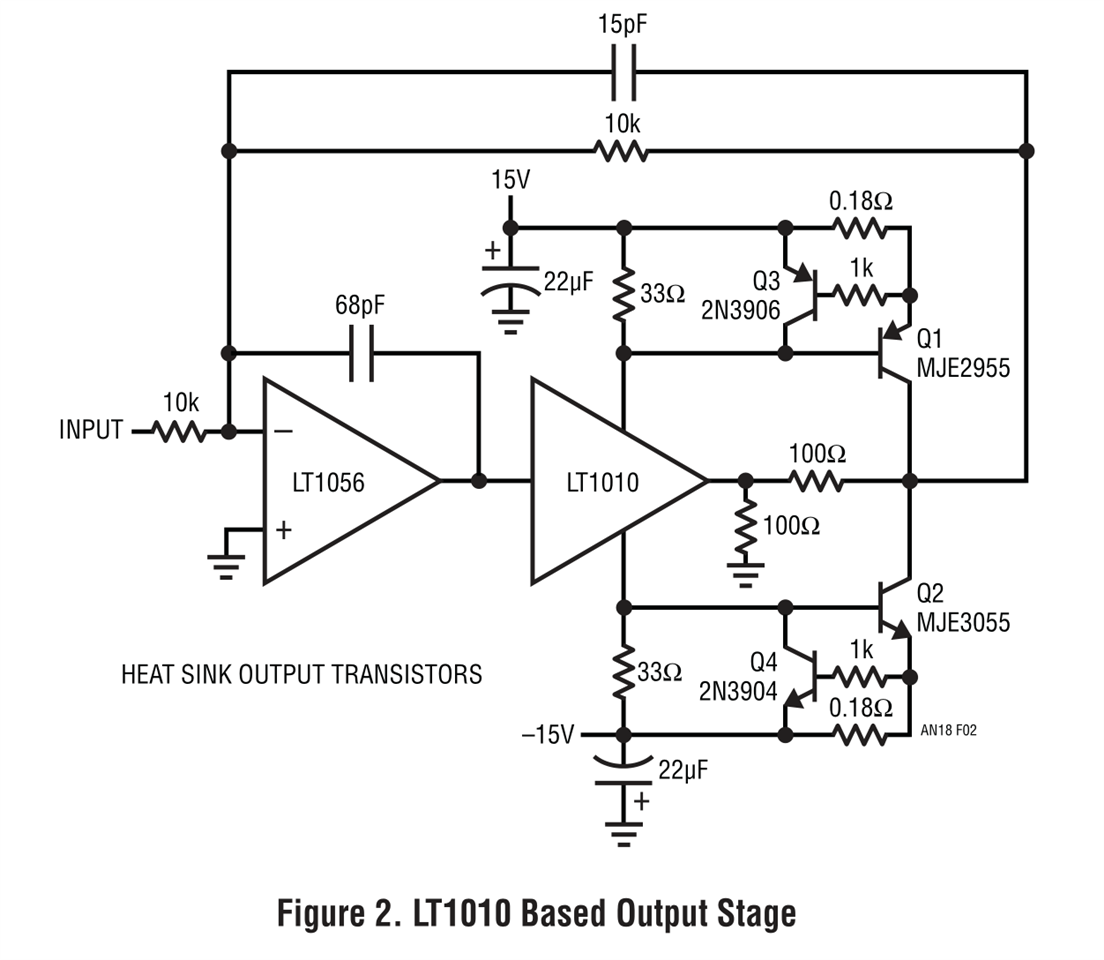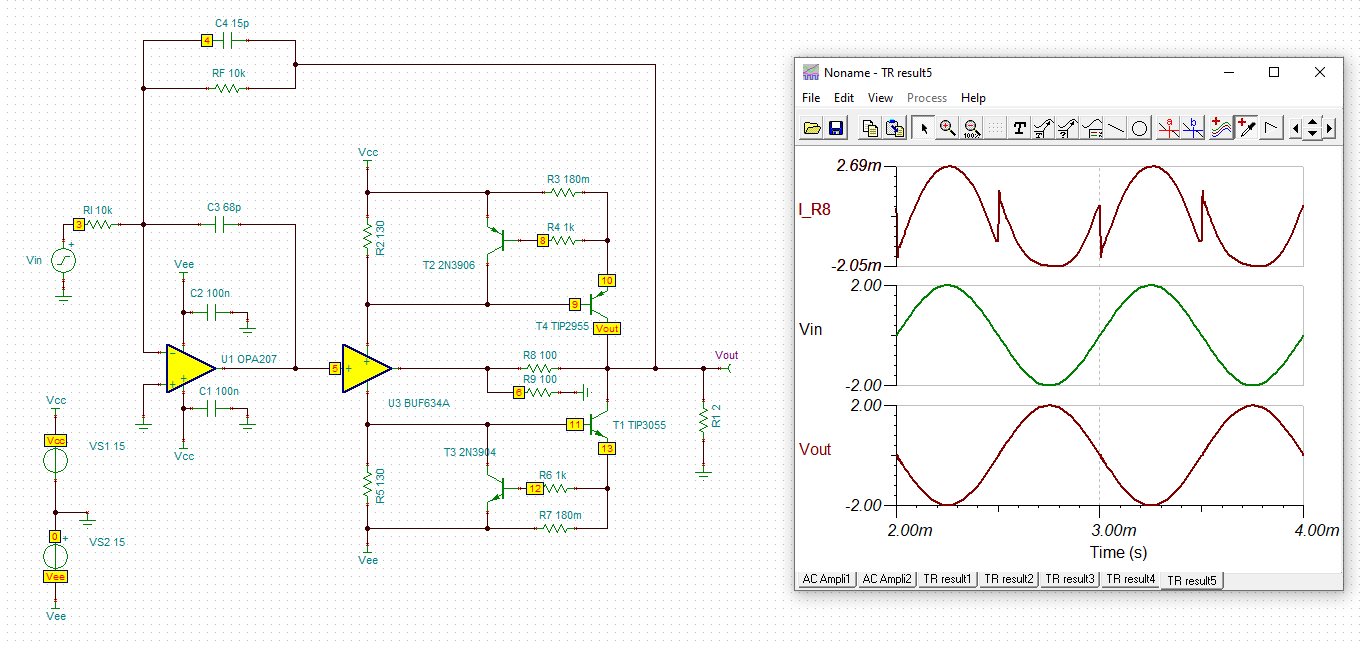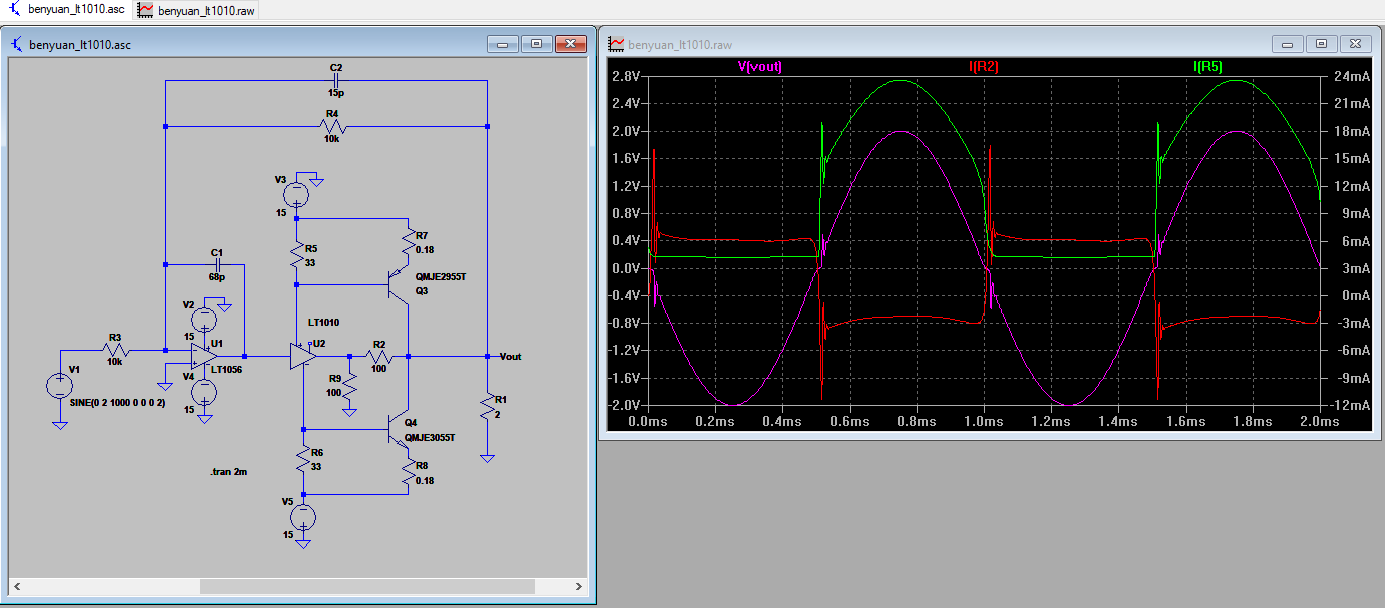Other Parts Discussed in Thread: OPA207, DAC11001B, DAC91001, TINA-TI, OPA549, LM3886, OPA564, OPA1656, OPA1622, BUF634
Hi, I want to reimplement Jim Williams classic power booster design using all TI's parts. The design is detailed in AN18F.pdf, Figure 2,

Where LT1010 is working, a current of 150ma Flows over 33Ohm resistors to turn on the Q1 and Q2, which conduct a 3A current to the load. Our application is a large disk coil which requires extreme low THD and fast bandwidth (400KHz, +-15V, >10V/us slew rate, THD<0.0001%).
I replaced LT1056 with OPA207 (for better DC performance and a higher bandwidth of 400KHz with a 10V/us slew rate) and LT1010 with BUF634A. I build the circuit using TINA, OPA207 and BUF634A are from the TINA example designs, MJE2955T and MJE3055T are using the PSpice model from On semiconductor websites. These BJT models are compiled using TINA and import as a micro. The schematic is as follows:

The problem is that the output is 0.
My question is,
1, Can I rebuild jim williams' design using TI's parts?
2, Will this circuit achieve low THD distortions < 0.0001% and high bandwidth (400KHz)? If so, how could I modify this TINA circuit and how could I analysis the THD metric? Is this power booster free of crossover distortions?
3, If 1 is resolved, I am going to build a PCB to test this design. Is there any guidelines in powering this circuit, as well as protecting the circuit from back EMF?
Thank you.
Benyuan










